Showing 1–12 of 17 results
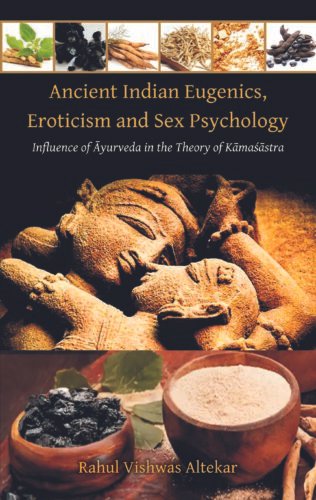
Disproving the overarching perception of sexual relationships and copulation postures, this book treats KÀmaœÀstra from different perspectives such as behavioral & sex psychology, its conceptual origination, later evolution and its parallel learning from °yurveda. It delves into how °yurveda exerts structural, conceptual, prescriptive and symbolic influences on KÀmaœÀstra, while highlighting the concept of aÈÇÀôga KÀmaœÀstra.
“KÀmaœÀstra invokes keen interest among people of all strata, all countries and makes a reflective impact on their lives. Although there is plethora of literature on the subject, most of them deal with the sexual relationships and copulation postures, relegating its genuine scientific relevance. For many, the KÀmasÂtra is the only authoritative text on KÀmaœÀstra, ignoring a large volume of texts on psychology, sociology and eugenics under its wide gamut. Based on the extensive research and empirical inputs from °yurveda practitioners, this book addresses the missing links of KÀmaœÀstra and the strong influence of °yurvedic principles on its overall framework. It discusses discoveries from the multiform temple structures at KhajurÀho, the Sun Temple at KoõÀrk and ŒrÁ Chenna- Keœava SwÀmy Temple at BellÂr among many others. These evidences endorse the theoretical views gathered from the pertinent literature. It helps readers understand KÀmaœÀstra concepts from different perspectives, especially the elaborations on various Àsanas.
The book deals with core °yurvedic themes like homeostasis, balance in physiological constituents, anatomy, digestion and metabolism, diet, lifestyles, therapeutical approach, virility, aphrodisiac and pharmacology, eugenics, surgery, materia medica, medication and medicinal plants that are presented as an extension to the KÀmaœÀstra theory.
The volume highlights the concept of aÈÇÀôga KÀmaœÀstra dealing with characteristics of the male, female, venue of copulation, rituals to yield progeny, prosperity, protection and happiness from KÀmadeva, significance of the right copulation mood and energy, food and sense consumption, and instruments. It should entice students, researchers, °yurvedic practitioners, and others alike.”

This attempts to examine how the corresponding ear-points can help in improving the body’s working. It also provides detailed explanations with tables and diagrams of various disorders that can be cured by using the acupuncture methods.
Among the many reflexology parts a human body has, ear is most unique and significant.
Ear is rich in nerve endings and placed at outer rim of the skull, vibrating with energy. In the ear body’s representation corresponds to a child in mother’s womb, curled in an upside down manner. Because of this the ear cure mechanism is also effective in curing problems originated in the womb.
Ear acts like the body’s radar reflecting its working precisely. When these reflex points are activated the sensitive ear nerves carry the return cure reflexes as electromagnetic waves to the organs and body parts, the body responds quickly and diseases are cured.
This is a wonderful effective nature cure through its remote control operation.
This book will serve as a guide to variety of readers especially those interested in traditional medicine and healing systems.
Nature’s gift to mankind.

The book speaks about the usefulness and advantages of acupuncture and acupressure therapies. It also attempts to understand the concept of kundalini energy and its association with acupressure.
The Energy Pathways in our Body
Acupuncture and acupressure are drugless therapies that are safe, simple, economical and yet very effective for treatment and prevention of a range of common diseases and ailments. The volume is an attempt to understand acupuncture: its effects and the theory of yin and yang that forms the basis of acupuncture. It examines the causes of diseases and functioning of organs of the body. It discusses the nature of the acupuncture points present in the 14 channels and the way the activation of these points helps in treatment of various disorders in the body. With numerous drawings depicting the various body parts and acupuncture points, it deals with the specific acupuncture points for treating specific tissues. It also notes the symptoms of diseases of different organs.
The book details the advantages of the ancient therapy of acupuncture, especially as it doesn’t have side-effects and can be followed along with other modes of treatment like homoeopathy. There is also an attempt to understand the concept of kundalini energy and its association with acupressure. A list of important instructions for the acupuncture practitioners explains the correct procedures of applying pressure at points. A chapter on case histories mentions successful treatment given to patients with a range of ailments.
The book will be useful to scholars and students of medical science in general but particularly those interested in alternative medicines and medical therapies.
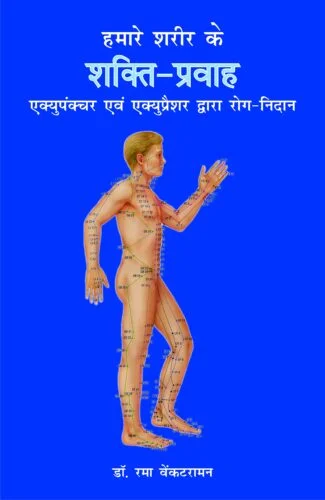
The book speaks about the usefulness and advantages of acupuncture and acupressure therapies. It also attempts to understand the concept of kundalini energy and its association with acupressure.
The Energy Pathways in our Body
Acupuncture and acupressure are drugless therapies that are safe, simple, economical and yet very effective for treatment and prevention of a range of common diseases and ailments. The volume is an attempt to understand acupuncture: its effects and the theory of yin and yang that forms the basis of acupuncture. It examines the causes of diseases and functioning of organs of the body. It discusses the nature of the acupuncture points present in the 14 channels and the way the activation of these points helps in treatment of various disorders in the body. With numerous drawings depicting the various body parts and acupuncture points, it deals with the specific acupuncture points for treating specific tissues. It also notes the symptoms of diseases of different organs.
The book details the advantages of the ancient therapy of acupuncture, especially as it doesn’t have side-effects and can be followed along with other modes of treatment like homoeopathy. There is also an attempt to understand the concept of kundalini energy and its association with acupressure. A list of important instructions for the acupuncture practitioners explains the correct procedures of applying pressure at points. A chapter on case histories mentions successful treatment given to patients with a range of ailments.
The book will be useful to scholars and students of medical science in general but particularly those interested in alternative medicines and medical therapies.

Mental imbalances due to psychological crises are the root cause of many physical and mental diseases. Yoga-nidra is the best therapy to induce complete physical, mental and emotional relaxation. It stimulates sleep in insomniacs and has come very effective in treating pain, neurosis and even disability.
The psychological crisis of this age is one of the severest challenges that human race has ever faced. Mental imbalances and their manifestations in the form of psychosomatic diseases pose serious health threat. To address this challenge, Indian yogis have found a wonderful relaxation technique yoga-nidra. They were fully aware that the inner tensions or imbalances of an individual can be best dealt with inner peace. The yogic texts unequivocally emphasize that peace can only be found within.
This volume deals with varied aspects of yoga-nidra and delves deep into its relationship with the stages of sleep, dream and samadhi. It highlights the topic in such a way that among the numerous relaxation therapies, yoga-nidrà is the best to induce complete physical, mental and emotional relaxation. It peels off the subliminal sheath of conscious mind that covers the inner core of the unconscious mind. Yoga-nidra is a state between sleep and samadhi, a half-sleep, a half-waking state. It removes fluctuations from all planes of mind. It helps insomniacs by stimulating sleep. This title underlines the regular usage of yoga-nidra in treating pain, neurosis and even disability. It also provides the practical utility of yoga-nidra with lots of evidences on the basis of experimental studies. Their references are well mentioned into it, which will help the scholars in their further studies and research.
This book should benefit the patients of insomnia, psychiatrists and all those who want to dwell in the bosom of mental peace, and those who are determined to experience the higher levels of meditation.

Mental imbalances due to psychological crises are the root cause of many physical and mental diseases. Yoga-nidra is the best therapy to induce complete physical, mental and emotional relaxation. It stimulates sleep in insomniacs and has come very effective in treating pain, neurosis and even disability.
The psychological crisis of this age is one of the severest challenges that human race has ever faced. Mental imbalances and their manifestations in the form of psychosomatic diseases pose serious health threat. To address this challenge, Indian yogis have found a wonderful relaxation technique yoga-nidra. They were fully aware that the inner tensions or imbalances of an individual can be best dealt with inner peace. The yogic texts unequivocally emphasize that peace can only be found within.
This volume deals with varied aspects of yoga-nidra and delves deep into its relationship with the stages of sleep, dream and samadhi. It highlights the topic in such a way that among the numerous relaxation therapies, yoga-nidrà is the best to induce complete physical, mental and emotional relaxation. It peels off the subliminal sheath of conscious mind that covers the inner core of the unconscious mind. Yoga-nidra is a state between sleep and samadhi, a half-sleep, a half-waking state. It removes fluctuations from all planes of mind. It helps insomniacs by stimulating sleep. This title underlines the regular usage of yoga-nidra in treating pain, neurosis and even disability. It also provides the practical utility of yoga-nidra with lots of evidences on the basis of experimental studies. Their references are well mentioned into it, which will help the scholars in their further studies and research.
This book should benefit the patients of insomnia, psychiatrists and all those who want to dwell in the bosom of mental peace, and those who are determined to experience the higher levels of meditation.
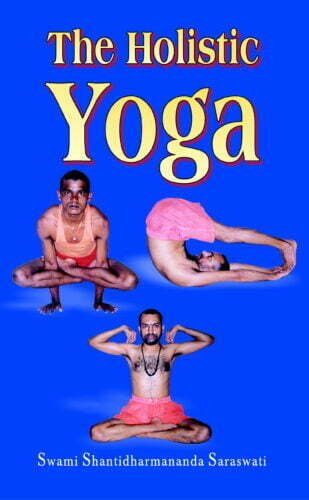
The book presents a study of different types of yoga, examining the theory and practice of yoga in terms of purification of the body and purification of the mind. It explains the way to achieve mental and spiritual yogic excellence through bodily discipline, meditation and yogic trance and asanas.
The book presents a study of different types of yoga as all of them are considered essential at different stages in the path of spiritual evolution: hatha yoga, raja yoga, kriya yoga, japa yoga, laya yoga, kundalini yoga, nada yoga, svara yoga among others. It starts with a background on the meaning and concept of yoga and its benefits and examines the theory and practice of yoga under two broad groups pertaining to purification of the body and purification of the mind, presenting yoga as taught in the Upanisadic texts as well as yoga as scientifically researched and practiced in the modern day by yogic masters. Under these groups are covered the science of the human body and its cleansing, postures, breathing and gestures and the different techniques meant for achieving spiritual and mental excellence through desireless actions, concentration fixation, meditation and yogic trance. Written in an easy-to-understand language, the work abounds in quotations and other references to the sacred scriptures and famous ancient works on yoga to provide a broad base and comprehensive treatment of the subject. The book will prove extremely relevant to all those simply interested in yoga or involved in studies on yoga, whether they are beginners, scholars or spiritual aspirants.
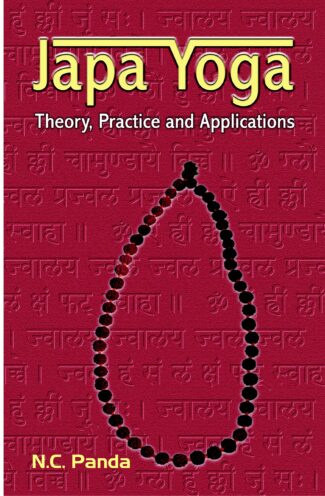
The repetition of God’s name or of a mantra containing God’s name, otherwise known as japa, is a religious ritual, generally meant for the emancipation of the self. This book on japa-yoga has not neglected this aspect. But, it is a more comprehensive and a broad-range booking effects of japa-applications on a scientific footing, a successful attempt made for the first time.
The repetition of Gods name or of a mantra containing Gods name, otherwise known as japa, is a religious ritual, generally meant for the emancipation of the self. The present book on japa-yoga has not neglected this aspect. But, it is a more comprehensive and a broad-range book. That japa is a branch of yoga, an easily attainable one and simultaneously a very effective one, has been emphasized. The theory and methology of japa in Patanjala Yoga, in the Vedas, in the Vedanta and in the Tantra, in the perspective of knowledge and devotion, have clearly been outlined. The book has been divided into three Chapters. Chapter 1 expounds the theory of japa based on classical scriptures. Chapter 2 presents the practice of japa in a clearly graspable style, easy to be followed by the readers. Chapter 3 deals with the applications of japa for the uplift of human personality and spirituality, for attaining the liberation of the self, for mental peace and tranquillity, and for physical health inclusive of the prevention and treatment of diseases, both physical and mental. The last part of this book tries to explain the effects of japa-applications on a scientific footing, a successful attempt made for the first time.

The repetition of God’s name or of a mantra containing God’s name, otherwise known as japa, is a religious ritual, generally meant for the emancipation of the self. This book on japa-yoga has not neglected this aspect. But, it is a more comprehensive and a broad-range booking effects of japa-applications on a scientific footing, a successful attempt made for the first time.
The repetition of Gods name or of a mantra containing Gods name, otherwise known as japa, is a religious ritual, generally meant for the emancipation of the self. The present book on japa-yoga has not neglected this aspect. But, it is a more comprehensive and a broad-range book. That japa is a branch of yoga, an easily attainable one and simultaneously a very effective one, has been emphasized. The theory and methology of japa in Patanjala Yoga, in the Vedas, in the Vedanta and in the Tantra, in the perspective of knowledge and devotion, have clearly been outlined. The book has been divided into three Chapters. Chapter 1 expounds the theory of japa based on classical scriptures. Chapter 2 presents the practice of japa in a clearly graspable style, easy to be followed by the readers. Chapter 3 deals with the applications of japa for the uplift of human personality and spirituality, for attaining the liberation of the self, for mental peace and tranquillity, and for physical health inclusive of the prevention and treatment of diseases, both physical and mental. The last part of this book tries to explain the effects of japa-applications on a scientific footing, a successful attempt made for the first time.

Diabetes is a malice threatening the very existence of the modern society. This book educates one how to diagnose type 1 and type 2 diabetes, how to test them, what all precautions are needed, how to deal with diabetes during pregnancy, what is diabetic foot and how to care it, the available medicines and their effects, what all exercises one should do to control diabetes, diet specifications, precautions to be taken while travelling, among many other pieces of information, that help a diabetic to lead a normal life.
India is under the grip of a malady called Diabetes. According to WHO and International Diabetes Federation (IDF), India is all set to become the diabetic capital of the world. Of the 31 crore estimated diabetic patients all over the world, India has more than six crore people affected with this disease. This book addresses many an issue faced by the diabetic patients, both type 1 and type 2. It thus provides detailed information on the genesis, restraints and cure, short- and long-term effects of diabetes. It also addresses a number of challenges associated with diabetes.
In a wide spectrum, the book talks about this silent killer and its symptoms, diagnosis, monitoring of blood glucose, its treatment, desired exercises to keep diabetes under control, changes needed in lifestyle to combat diabetes, diet on special occasions, sugar tablets, herbal medicines, insulin therapy, how to face emergency situations in diabetes, complications due to diabetes, relationship between diabetes and (1) heart disease, (2) eyesight problems, and (3) kidney disorders. It also delves deep into the implications of diabetic foot, fluctuations in body weight due to this disease, other common ailments in diabetics, targets of controlling diabetes, pregnancy and diabetes, travelling with diabetes, need of routine diabetic examination and tests, impact of alcohol on a diabetic, diabetes in children and the aged, guidelines for fasting, etc.
The book also educates one on what to eat and what not, to keep diabetes under control. A detailed diet chart with calorie calculation is also given for a diabetic to follow in day-to-day life. In addition, it provides quite a lot of data related to our physical fitness, be it weight, height, food recommendations for non-veg people, or calorie value conversion of different food items. In a nutshell, this guidebook is a must-need for a diabetic and must-read for his family members as there is no permanent cure available for diabetes as yet, and its management is equally important like its treatment.
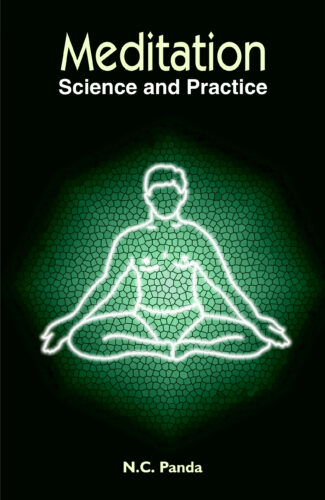
Prof. Panda discusses the eight limbs of Patanjala Yoga, emphasizing on meditation in its three stages of dharana, dhyana and samadhi. Delving into Patnnjalis classical yogic theories, he gives detailed guidelines on the practice of meditation and explains in scientific terms the benefits surfacing from the practice of meditation.
Yoga, contrary to the popular perception, is not merely a system of physical culture. It is, in fact, a uniquely Indian discipline aiming to bring about the union of an individual spirit with the Universal Spirit: the Cosmic Consciousness through what in Yoga is known as samadhi, a state of profound meditation. Patanjalis Yoga-sutram, written sometime around the second century bc, is the first, systematic, at once authoritative presentation of Yoga: in both its theoretical and practical aspects. Professor N. C. Panda, who has had a lifetime involvement with the science and practice of Yoga, here outlines the eight limbs of Patanjala Yoga, with added emphasis on meditation in all its three stages: dharana, dhyana, and samadhi; and how this ancient system of bodily and mental control is found to have a strong scientific basis. Offered in three parts, his book focuses, in Part 1, on the practice of meditation, with detailed guidelines concerning the relevant yogic postures, yogic breathing and breath-control. Part 2 presents Patanjalis classical yogic theories, showing how these are validated: both theoretically and experimentally, by modern science. In Part 3, the author explains, in pure scientific terms, the physical, psychic, therapeutic and spiritual benefits surfacing from the practice of meditation. Though based on the principles of classical yoga, Professor Pandas book is truly a brilliant effort to treat Yoga as an advanced science. Including a comprehensive glossary of Sanskrit technical terms and numerous illustrations, it is invaluable to medical scientists/researchers/anyone interested in Yogic Meditation and how it can give a holistic, healthy and creative life.

Prof. Panda discusses the eight limbs of Patanjala Yoga, emphasizing on meditation in its three stages of dharana, dhyana and samadhi. Delving into Patnnjalis classical yogic theories, he gives detailed guidelines on the practice of meditation and explains in scientific terms the benefits surfacing from the practice of meditation.
Yoga, contrary to the popular perception, is not merely a system of physical culture. It is, in fact, a uniquely Indian discipline aiming to bring about the union of an individual spirit with the Universal Spirit: the Cosmic Consciousness through what in Yoga is known as samadhi, a state of profound meditation. Patanjalis Yoga-sutram, written sometime around the second century bc, is the first, systematic, at once authoritative presentation of Yoga: in both its theoretical and practical aspects. Professor N. C. Panda, who has had a lifetime involvement with the science and practice of Yoga, here outlines the eight limbs of Patanjala Yoga, with added emphasis on meditation in all its three stages: dharana, dhyana, and samadhi; and how this ancient system of bodily and mental control is found to have a strong scientific basis. Offered in three parts, his book focuses, in Part 1, on the practice of meditation, with detailed guidelines concerning the relevant yogic postures, yogic breathing and breath-control. Part 2 presents Patanjalis classical yogic theories, showing how these are validated: both theoretically and experimentally, by modern science. In Part 3, the author explains, in pure scientific terms, the physical, psychic, therapeutic and spiritual benefits surfacing from the practice of meditation. Though based on the principles of classical yoga, Professor Pandas book is truly a brilliant effort to treat Yoga as an advanced science. Including a comprehensive glossary of Sanskrit technical terms and numerous illustrations, it is invaluable to medical scientists/researchers/anyone interested in Yogic Meditation and how it can give a holistic, healthy and creative life.
| There are no products |